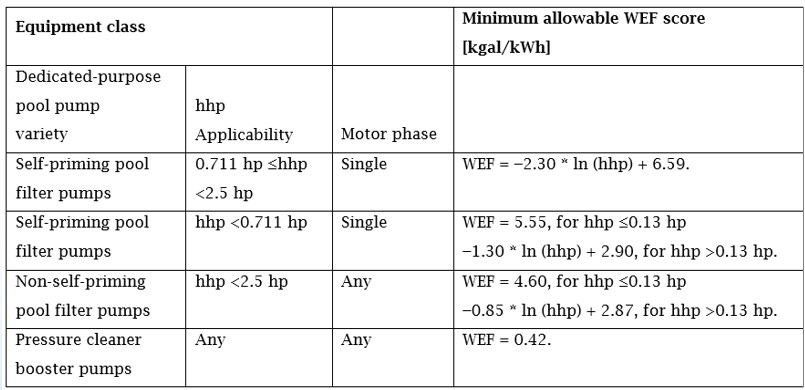
In the new Dedicated Purpose Pool Pump regulation which took into effect on July 19th 2021, all the pool pumps are sorted into self-priming and non self-priming, which has different energy efficiency standard to meet. Generally speaking, the DPPP rule has more strict energy efficiency standard on self-priming pool pumps than that of non self-priming pool pumps. But how do we know if a pool pump is self-priming or not?

Definition
Strictly speaking, all the pool pumps are not self-priming according to the traditional definition of self-priming since all the pool pumps are centrifugal pumps. There are no seals between the suction and discharge sides of the pump. This means that centrifugal pumps are ineffective with air and are not capable of evacuating air from a suction line when the liquid level is below that of the impeller. In such cases, the pump is said to be air-bound and there is a danger of overheating: generally, pumps rely on the pumped fluid to lubricate and cool the pump’s bearings.

But the DPPP rules did sort the pool pumps into self-priming and non self-priming, let’s see how it defines: Self-priming pool filter pump means a pool filter pump that is certified under NSF/ANSI 50–201515 to be self-priming or is capable of re-priming to a vertical lift of at least 5.0 feet with a true priming time less than or equal to 10.0 minutes, when tested in accordance with NSF/ANSI 50–2015, and is not a waterfall pump.
Application
The DPPP rule also suggests that, usually an inground pool pump is regarded as self-priming and an above ground pool pump is regarded as non self-priming. This makes some pool owners quite upset: my inground pool pump seems non self-priming according to the definition of the DPPP rule, do I have to replace it?
I would say, no need of that. The definition of the DPPP rule is for energy efficiency standard, it will not have any effect on the performance of the existing pool pumps. In pool industry, before the DPPP rules took into effect, usually we regard those high vertical lift & low flow rate pool pumps as self-priming and those low vertical lift & high flow rate pool pumps as non self-priming. If the pool pumps can meet the energy efficiency requirement of DPPP rule, you can still use non self-priming pool pump on your inground pool as long as the water level is as close to the pump’s vertical lift. In other words, if the water level is far below the pump’s vertical lift, we suggest to use a check valve to prevent air going into the suction line.
In conclusion and suggestion to pool pump distributors: If the pool pump you are selling meets the DPPP rules, you can still sell them as previously despite the pump is self-priming or not, please keep your sales strategy as before.
If you have any more questions, we, as a professional pool pump manufacturer, are happy to help at any time!
© 2022 All Rights Reserved.